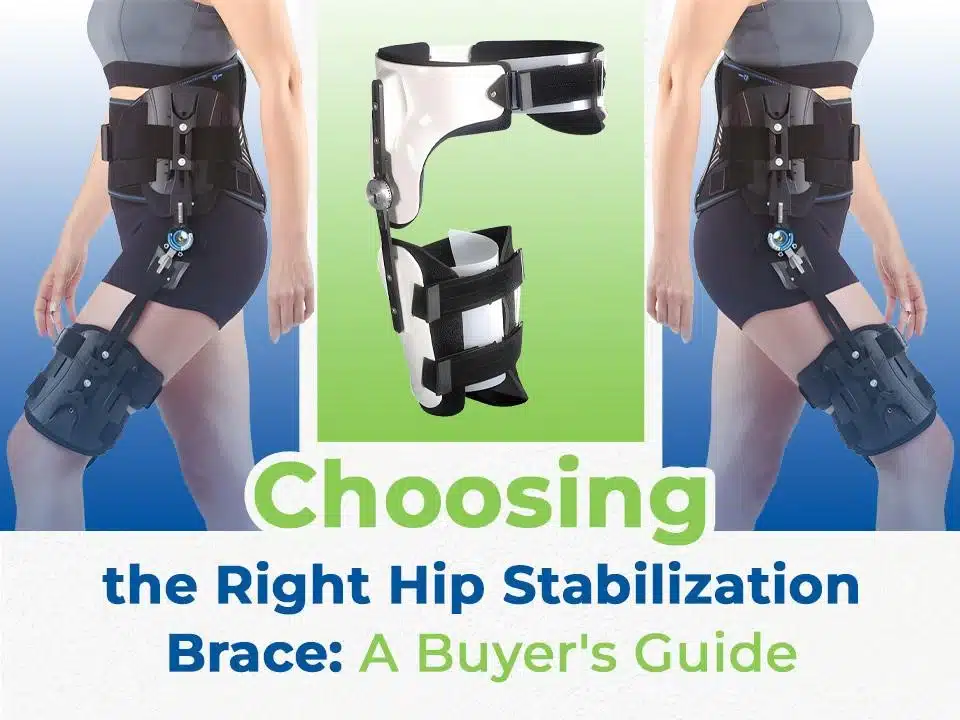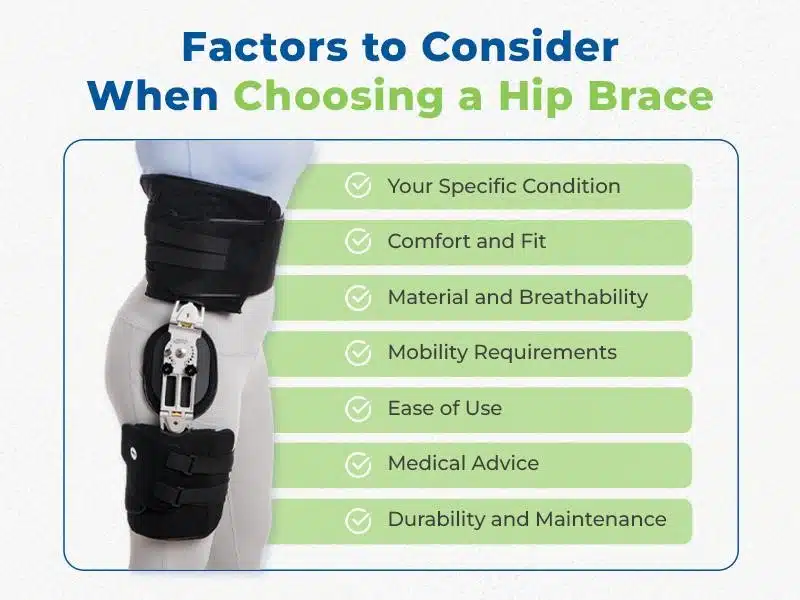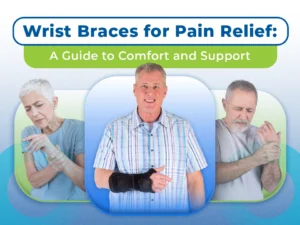Hip pain and instability can profoundly impact your daily life, making even the simplest tasks a daunting challenge. Whether you’re in the process of recuperating from hip surgery, dealing with ongoing chronic hip pain, or simply seeking additional support for physical activities, a hip stabilization brace has the potential to be a valuable ally. In this extensive buyer’s guide, we will take you through a detailed, step-by-step journey to help you understand the critical factors that should weigh into your decision-making process when choosing the perfect hip brace. This comprehensive approach aims to assist you in selecting the ideal hip brace tailored to your unique needs and concerns, ensuring you regain the stability and comfort necessary to live life to the fullest.
Understanding the Significance of Hip Stabilization
Before we dive into the nuances of hip braces, it’s essential to comprehend the importance of hip stabilization. Among the body’s largest and most vital joints, the hip joint bears the weight of our body and enables a wide range of movements. However, when the hip joint becomes unstable, due to injury, surgical procedures, or conditions like hip dysplasia, it can result in discomfort, pain, and significant restrictions in mobility.
Hip instability can manifest in various ways, ranging from a general feeling of weakness in the hip joint to frequent dislocations or subluxations, where the hip partially comes out of its socket. This instability can be attributed to a variety of factors, including congenital issues, traumatic injuries, or degenerative conditions like arthritis.
In essence, hip stabilization is about restoring the hip joint’s proper function, minimizing pain, and enhancing mobility. A hip stabilization brace plays a pivotal role in achieving these objectives by providing support, promoting correct alignment, and reducing excessive hip joint movement. Now, let’s delve deeper into the key considerations for choosing the right hip brace to address your specific needs.
Types of Hip Stabilization Braces
Hip stabilization braces come in various types, each designed to address specific hip-related issues. Understanding the available options is the first step in choosing the right brace. Here are some common types:
- Hip Abduction Brace: This type of brace is often recommended for post-surgery recovery. It helps keep the hip joint in proper alignment, ensuring that the healing process proceeds as smoothly as possible. Hip abduction braces typically consist of padded straps and a waistband that secures the hip joint in a specific position, preventing excessive movement during the crucial early stages of recovery.
- Hip Compression Sleeve: These sleeves offer gentle compression and support to the hip area. They are suitable for managing conditions like hip arthritis or bursitis. Hip compression sleeves are designed to provide warmth and reduce inflammation, which can help alleviate pain and discomfort associated with these conditions. They are typically made from breathable and stretchable materials for maximum comfort.
- Hip Belt: Hip belts are versatile and provide additional support during physical activities. They are popular among athletes and active individuals who require extra stability for their hip joints. These belts are typically made from durable materials and feature adjustable straps to ensure a snug fit. Hip belts can be worn during various activities, such as running, weightlifting, or any exercise that places stress on the hips.
- Posterior Hip Brace: Designed to stabilize the back of the hip, these braces are particularly helpful for conditions like sacroiliac joint dysfunction. They support the posterior pelvic region, reducing excessive movement and helping alleviate pain and discomfort. Healthcare professionals often recommend posterior hip braces to aid in the management of such conditions.
- Hip Flexor Brace: Hip flexor braces are designed to support and protect the muscles and tendons in the front of the hip joint. These braces are commonly used by athletes and individuals who engage in activities that involve repetitive hip flexor movements, such as running or kicking. They help prevent overuse injuries and provide compression and stability to the hip flexor area.
- Trochanteric Belt: Trochanteric belts are specifically designed to target the trochanteric region of the hip, which is located on the outer side of the upper thigh. These belts are helpful for conditions that cause pain and inflammation in this area, such as trochanteric bursitis. Trochanteric belts provide compression and support to reduce discomfort and improve mobility.
It’s essential to consult with a healthcare professional or orthopedic specialist to determine the most suitable type of hip stabilization brace for your specific condition and needs. They can provide guidance on selecting the right brace to address your hip-related issues effectively.
Read More: The Benefits of Using a Hip Support Brace for Pain Relief
Factors to Consider When Choosing a Hip Brace
Selecting the right hip stabilization brace involves several crucial factors. Consider the following when making your decision:
- Your Specific Condition: The first step in choosing the right hip brace is to identify your underlying hip issue or the reason for needing a brace. Different conditions, such as hip arthritis, hip dysplasia, or post-surgery recovery, require different types of braces. Understanding your specific condition is essential to determine which type of brace will provide the most effective support and relief.
- Comfort and Fit: A well-fitting brace is essential to ensure comfort and effectiveness. Look for hip braces with adjustable straps and sizing options to find the right fit for your body. The brace should conform to your hip’s shape without being too tight or loose. A comfortable fit encourages consistent use and better results.
- Material and Breathability: The choice of material for your hip brace is more than just a matter of preference; it’s essential for your overall well-being. Opt for braces made from breathable materials that allow air circulation and moisture-wicking. This helps prevent excessive sweating, skin irritation, and discomfort, especially during extended wear.
- Mobility Requirements: Consider your activity level and mobility needs. If you require mobility during physical activities, such as walking, running, or exercising, choose a brace that provides support without restricting movement. Some braces are designed to offer a balance between stability and mobility, making them suitable for active individuals.
- Ease of Use: The ease of putting on and taking off the brace is a practical consideration, particularly if you have limited mobility or dexterity. Look for braces with user-friendly features like quick-release buckles or adjustable closures that simplify the process. An easy-to-use brace ensures that you can manage it comfortably, even if you need to put it on and take it off regularly.
- Medical Advice: Always consult with a healthcare professional or orthopedic specialist before purchasing a hip brace. They can provide valuable guidance based on your specific needs and medical history. A healthcare provider can help you determine the most suitable type of hip brace for your condition and recommend the appropriate size and fit.
- Durability and Maintenance: Consider the durability of the hip brace and its maintenance requirements. A high-quality brace should withstand daily wear and tear while retaining its support and comfort. Additionally, inquire about cleaning and maintenance instructions to ensure the longevity of the brace’s performance.
By considering these factors and seeking professional advice, you can make an informed decision when choosing a hip brace. The right brace can significantly enhance your comfort, mobility, and overall quality of life while addressing your specific hip-related concerns.
Benefits of Hip Stabilization Braces
Hip braces offer a range of benefits for individuals dealing with hip pain and instability:
- Pain Relief: One of the primary advantages of hip braces is their ability to provide effective pain relief. By offering support and stabilization to the hip joint, these braces can help alleviate the pain and discomfort associated with various hip conditions. Whether you’re managing hip arthritis, recovering from hip surgery, or dealing with hip dysplasia, a well-fitted brace can significantly reduce pain and improve your overall comfort.
- Improved Mobility: Hip braces play a crucial role in enhancing mobility. They provide the necessary support to the hip joint, allowing individuals to move more comfortably and confidently. Improved mobility promotes independence and enables individuals to engage in daily activities with greater ease. Whether it’s walking, climbing stairs, or participating in recreational activities, a hip brace can make a significant difference in your ability to move around comfortably.
- Post-Surgery Support: For individuals recovering from hip surgery, a hip stabilization brace can be an essential aid in the rehabilitation process. These braces help keep the hip joint in the correct position, preventing complications and supporting the healing process. Whether you’ve undergone hip replacement surgery or hip arthroscopy, a post-surgery brace offers the necessary support and stability to promote a successful recovery.
- Enhanced Quality of Life: Ultimately, hip braces contribute to an enhanced quality of life. By reducing pain, improving mobility, and providing post-surgery support, these braces allow individuals to enjoy a better overall quality of life. You can engage in daily activities more comfortably and confidently, leading to increased independence and a more fulfilling lifestyle.
- Preventive Benefits: Hip braces are not only useful for managing existing hip conditions but can also have preventive benefits. Individuals at risk of hip injuries or those involved in physically demanding activities can use these braces as a preventive measure. They offer an added layer of protection to the hip joint, reducing the risk of injuries or strains during physical exertion.
In summary, hip stabilization braces offer a range of valuable benefits, including pain relief, improved mobility, post-surgery support, and an enhanced quality of life. Whether you’re recovering from hip surgery, managing chronic hip pain, or looking to prevent injuries, the right hip brace can make a significant difference in your comfort and overall well-being.
Conclusion: Your Path to Pain Relief and Mobility
In conclusion, the process of selecting the perfect hip stabilization brace plays a pivotal role in your journey toward pain relief and enhanced mobility. By carefully assessing your unique needs, seeking guidance from medical professionals, and opting for a comfortable, well-fitting brace, you can regain the stability you need to embrace an active lifestyle once more. Don’t let hip pain hinder your daily activities – take that crucial first step toward a more comfortable, mobile, and pain-free life with the right hip brace. Your path to restored mobility and a brighter future begins today.https://artikmed.com/choosing-the-right-orthopedic-support-factors-for-medicare-beneficiaries/









